2023-2024 Flax Removal from Inaccessible Island
Report from Carmen Ferreira, Rope Access Head of Department.
Photographs from Carmen, Brandon Cloete and Julia Gunther
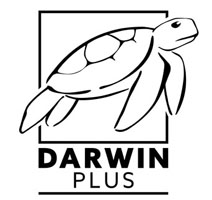 |
 |
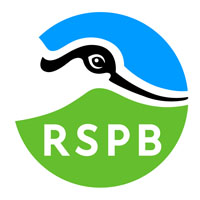 |
For the the past five years, during each summer season, Inaccessible Island has been the home base for a team of four contracted by a company called I-Rigging Solutions. Their purpose is eradicating the invasive plant, New Zealand flax Phormium tenax, that was introduced to Inaccessible Island in the 1930s - when an attempt was made to establish a human settlement at Waterfall Beach. Here, flax plants were transferred from Tristan da Cunha mainly for thatching purposes. The settlement was unsuccessful, but, unfortunately, the flax survived and thrived and has managed to invade predominantly around the north eastern region of the island stretching from Waterfall Cliff face to Salt Beach. The Flax Eradication Project has been an ongoing effort facilitated by the Royal Society for the Protection of Birds (RSPB) and managed by the Tristan Conservation Department. The project is currently funded by the Darwin Plus Grant Scheme and has also contributed to funding in previous years.
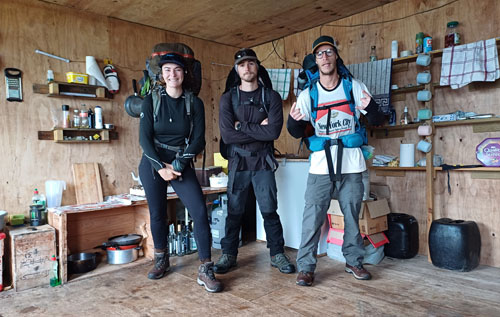
In the Blenden Hall Conservation Hut are, left to right Carmen Ferreira,
Christiaan Gerber and Brandon Cloete ready to go with packed rucksacks.
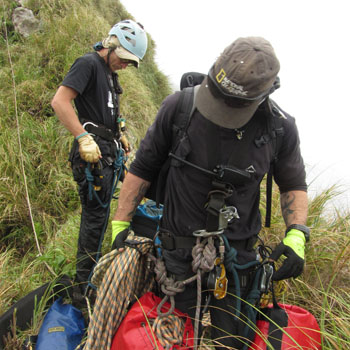 |
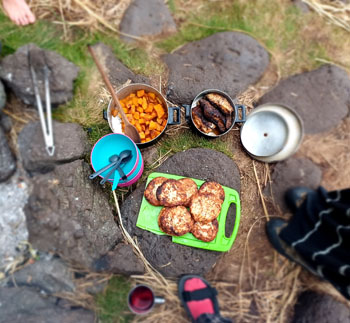 |
| Christiaan Gerber and Brandon Cloete getting rigging ropes ready. |
Birds-eye view of an al fresco meal. |
Fortunately, New Zealand flax is a slow grower, but, in spite of this, the plant has spread and its visible presence can be seen on the Waterfall Ridge cliff face. This was also the most dense area of flax up until the 2022 season. With the completion of another two successful eradication seasons since 2022, the plant profile has changed from high dense areas of plants, found at Waterfall Ridge, to more singular and isolated plants towards the Salt Beach side ─ known as outlier plants due to active eradication efforts.
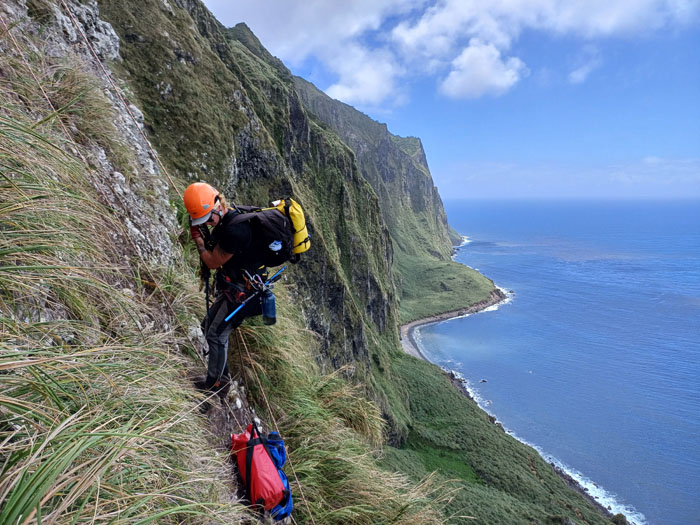
Jedd Cossey on ropes high above Waterfall Beach with Salt Beach beyond.
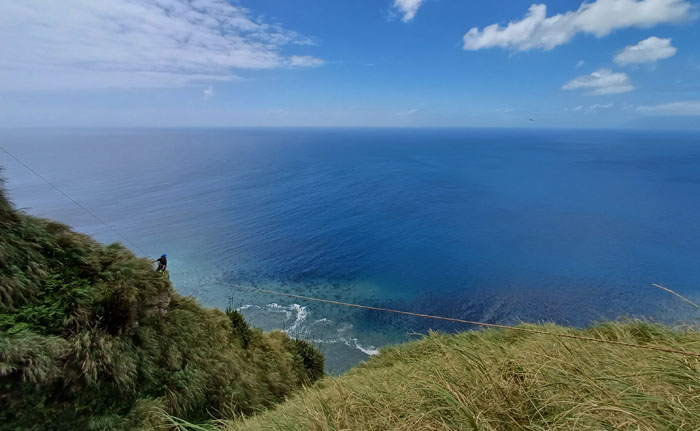
Christiaan Gerber on a rope transversing a gulch on the edge of the Inaccessible plateau.
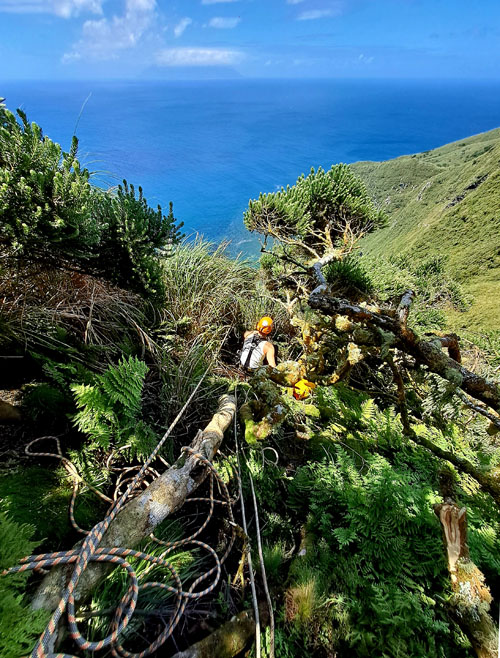
Jedd Cossey on ropes within an island tree Phylica on the edge of the Inaccessible plateau.
The eradication approach has started from most dense to less dense areas in order to decrease the spread of seeds, especially on exposed rocky areas where it is easier for seeds to anchor and germinate. The denser the tussock the less small plants will be expected, and if so, cluster of plants growing around one large plant or a large singular plants in comparison with multiple small plants found around a bare rock area where the tussock is shorter and not so extremely dense.
This past summer season, between the months of December to March, the rope access team has endured a full 10-week stint on the island. With five years in the running and another two seasons to go, the battle to rid the island of flax is progressing well.
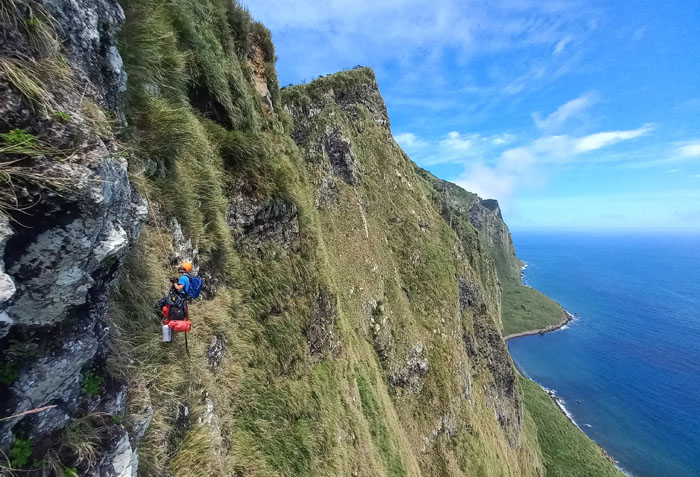
Another view of Jedd Cossey on ropes high above Waterfall Beach with Salt Beach beyond.
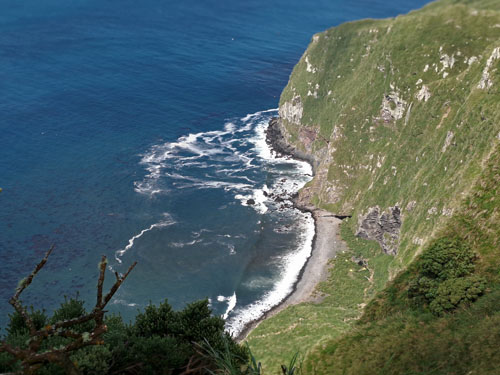
View of Waterfall Beach which was the site of the failed Five-Year Plan to colonise Inaccessible in the 1930s
which first introduced New Zealand Flax for roof thatch.
Waterfall beach is one of the few beaches on Inaccessible with a freshwater supply which makes it viable for the team to survive out there under those circumstances. In order to make living and work viable – two camps are established each season – one on the plateau and one at the base of the cliff.
The project team, being fully submerged in their natural surroundings, is continuously gathering valuable knowledge regarding the environment and wildlife. The seal activity on the coastline has been vigorous, making living conditions and camping quite tricky down at the base camp. It has embedded a vigilant mindset among the team members. Each year the team gets a better grasp of the wildlife, especially the abundant birdlife. On the plateau the island becomes alive at night. During mating season, the borrowing birds heave from underground, so getting a non-interrupted night’s rest is a rarity, and far-between.
Every season gets judged by the weather it presents. As for the weather it plays a significant role in how much work can be completed each season- as a given the weather conditions on Inaccessible can fluctuate from profoundly beautiful hot, sunny, and windless days to gale force winds gusting up to 70-80 kmh coupled with heavy rain showers. Mist covers the mountain during the December period, giving the island a mysterious air.
This past 2024 season boasted continuously wet days with large amounts of rain pouring down, followed by exceptionally hot and windless, sunny days during February which made working conditions challenging. Wind from the south made working on the north-eastern cliff faces viable whilst the camping grounds on the plateau were blowing in full turmoil. Despite the extreme weather conditions, the team made excellent progress and has managed to clear a large area of cliff.
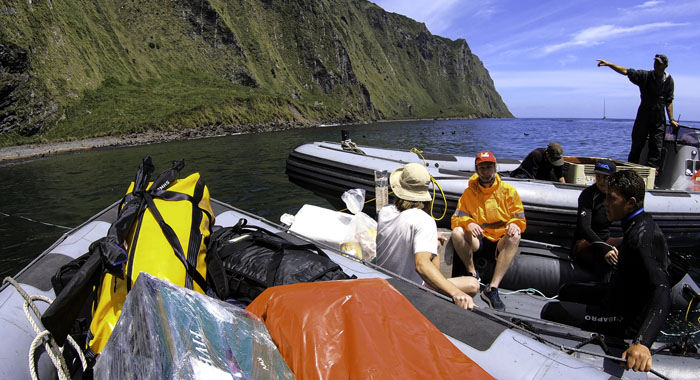
Tristan Conservation Department RIBs on one of their trips to Inaccessible Island to support the Flax Eradication Team.
Throughout the season, Trevor Glass and his team (Julian Repetto, Wayne Swain, Shannon Swain, Tristan Glass and Kieran Glass) provided essential back-end support system for the project - the team received multiple visits to replenish food stores and logistical assistance. This included major operations to load and offload gear to and from Inaccessible plus transferring the team from Waterfall Beach to Blenden Hall, where the cross-island hike towards waterfall cliff plateau starts.
After spending so many summer seasons on Inaccessible, the logistics and the camp management of this unique, annual expedition has improved greatly and the way of life on the island has become second nature. But, it goes without saying ─ by the end of a work season, team members are aching for a hot shower, a flushing toilet and meat protein.
The level of kindness and generosity shown from the local community towards the team has been amazing, Tristan cakes, treats have been gifted along the way to make the outdoors on Inaccessible for the duration of the expedition so much more bearable.
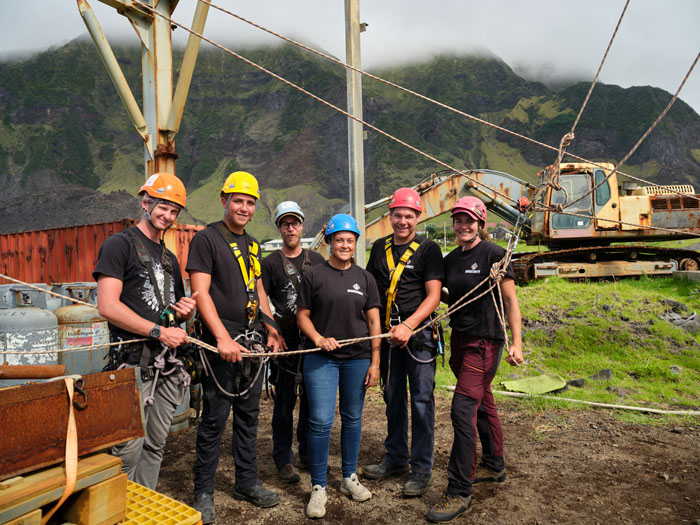
The rope team with members of the Tristan Conservation Department during rope training on Tristan da Cunha. Left to right: Jedd Cossey, Tristan Glass, Brandon Cloete, Shannon Swain, Kieran Glass and Carmen Ferreira.
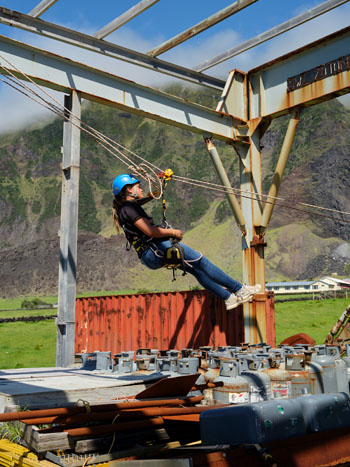
Shannon Swain gaining rope skills.
The project also facilitates post trip training and aim to build practical skills among Tristan community members. The up-and-coming younger members of the Tristan Conservation Team (Tristan Glass, Kieran Glass and Shannon Swain) participated in rope access and rescue training with Carmen and her team. The training encompasses basic technical rope knowledge rigging techniques and basic theory behind loads forces and mechanical advantage. The team get exposed to rescue techniques and manoeuvres applicable to Inaccessible work ethic. The intension is to expand knowledge and awareness and ultimately initiate interest so that further research projects can be facilitated on and around their home territory on a place like Inaccessible where accessibility is limited.
